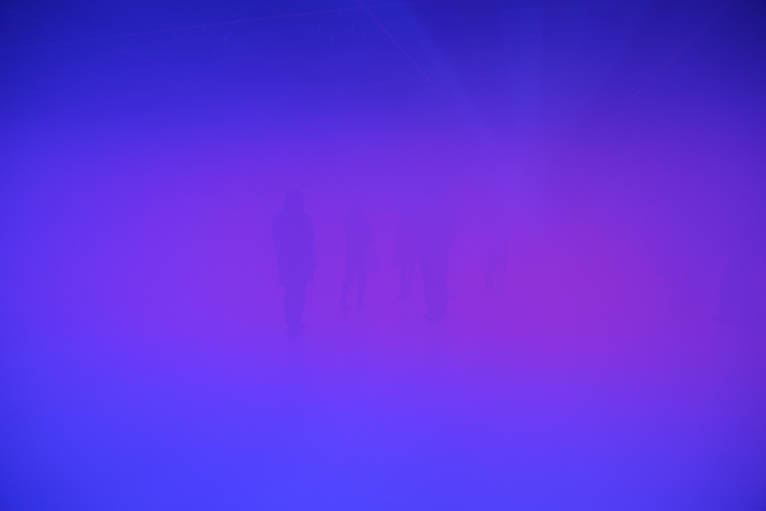OLAFUR ELIASSON AND MA YANSONG
| June 1, 2010 | Post In LEAP 3

Olafur Eliasson, introducing his latest work at the Ullens Center for Contemporary Art (UCCA), riddled his audience thus: “How are you? And who are you?” Pausing for a moment, he then explained that save for the order of their letters, “who” and “how” are such similar words that the questions are almost the same. Where one might assume that answers to the first question are subjective and answers to the second objective, Eliasson said he believed in the transparency of the relationship between how we are feeling and who we know ourselves to be. “So if you know how you are, then you know who you are,” thus asserting the legitimacy of the exhibition’s title, “Feelings are Facts.”
“Feelings are Facts” is a room-sized installation in which a thick, artificial blanket of fog absorbs the light emitted by red, green and blue fluorescent lamps overhead. The spaces between lamps blend into a bright palette of secondary colors, and as visitors walk throughout the heavy mist, it seems as though they are traversing the colors themselves, passing from one hue into the next.
The exhibition is Eliasson’s first in China, and he partners with Ma Yansong, the Yale-trained architect and founding principal of MAD Architects. MAD’s body of work—huge buildings whose metal structures mimic the organic forms of their natural surroundings—would seem to have little in common with the foggy color field Eliasson admits to have been developing, independent of the UCCA exhibition, for more than a year in the documentary Space is Process. Ma’s contribution to the exhibition is the container in which it is housed, a low-ceilinged white box whose slope gradually rises until the floor curves upward into infinity. Curiously, a concurrent Eliasson exhibition (“Your Chance Encounter”) at the 21st Century Museum of Contemporary Art in Kanazawa, Japan features the same misty installation of colored lights, but without Ma’s collaboration—in Beijing, Ma seems to play native informant to Eliasson’s cultural outsider.
In fact, “Feelings are Facts” is classic Eliasson, bearing all the traditional hallmarks of his work: a visceral, largely immaterial installation whose import lies in its experience. He has used each of the elements at play in “Feelings are Facts” many times before: mist, for example, in Beauty (1993), The Mediated Motion (2001) and The Weather Project (2003); colored light in Room for All Colors (1999), Your Color Memory (2004) and Multiple Shadow House (2010). If these are Eliasson’s favored implements, blank walls and open spaces are his favored canvases, and his spare yet commanding aesthetic is ultimately a good fit for UCCA’s “bigger is better” mentality. (The institution does do the exhibition disservice in its execution: the fog is thick and uncomfortable; viewers, for issues of respiratory health, are advised not to spend more than fifteen minutes inside. One wonders if Eliasson installations elsewhere are similarly oppressive.)
Still, “Feelings are Facts” sounds a high note for the artists, and it succeeds at forcing shifts in its viewers’ methods of perception: while the fog limits one’s ability to spatially orient herself in the exhibition hall, the rising slope of the ground, color-coded sectioning of space and the noise of visitors out of sight but not sound all provide alternative cues—an awakening of the sensorium that pushes the viewer, albeit in small steps, toward the understanding that feelings maybe are facts. At its worst, the exhibition is sensational, a spectacle that panders to the expectations of passive contemporary art audiences. But at its best, it exploits that sensationalism in the pursuit of alternative spatial intelligences. Angie Baecker

